You Can’t Beat Beets!
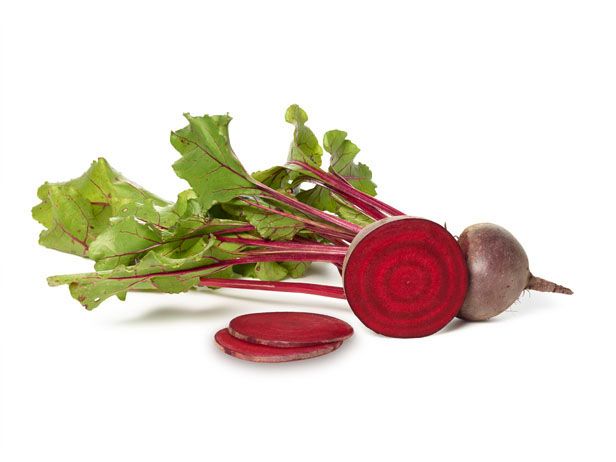
That’s right. You can’t beat them for their versatility. Just look at the reasons why:
Beet leaves are LOADED with nutrients and are just as powerful as kale or chard. So steam them.
Or take them raw in your green smoothies.
The beet itself is also LOADED with nutrients and is considered one of the best liver cleansers you can find. So slice and steam them.
Or take them raw in your green smoothies. (One note: Don’t be alarmed if your urine turns red. This is just the beet doing it’s job.)
And the beet itself is divine when pickled. Beets are flavor-flexible, also, so you can spice them up according to your taste preferences. Here’s a very simple recipe that can take on spices of your choosing —this is just a base to begin with.
Beet water/infusion is also full of nutrients and has several uses.
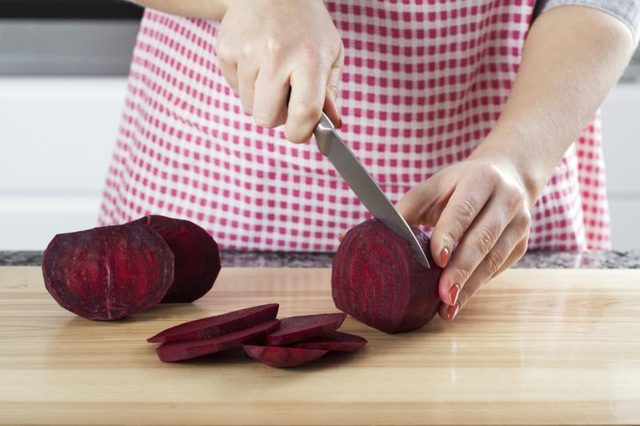
Before I share a terrific pickled beet recipe and uses for beet water/infusion, let’s talk about why beets can’t be beat for nutrition. Beets are a great source of iron, and they also contain folic acid, sodium, magnesium, calcium, iron, and phosphorus. They’re high in vitamins A, C, and niacin. Beets cleanse the colon and blood. They protect against heart disease and strengthen the gall bladder and liver. Research shows they can heal acne and are excellent in treating (even curing) boils and abscesses. Finally, beets are amazing immunity-boosters, and thus are a powerful anti-cancer food.
You can see why beets ought to be included in the diet on a regular basis. And since it’s beet season now, you might want to take the opportunity to preserve some for the coming winter. Here’s a perfect recipe (from Mother Earth News) for doing just that:
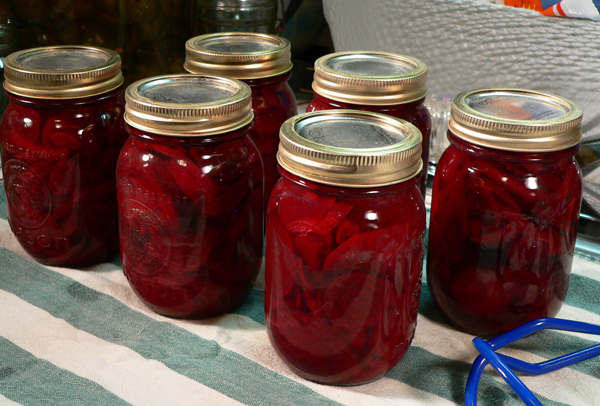
PICKLED BEETS
4 pounds medium size beets
2 cups water (or reserved beet water/infusion)
1-2 cups sugar (depends on your "sweet" preference)
2 cups white distilled vinegar
2 teaspoons pickling spices (you can buy this at the store OR make your own)
1. Scrub beets with a vegetable brush before putting into water to boil. Reserve the beet water/infusion.
2. After washing beets, put into large stock pot; cover with water. Cook on Med/Hi to Hi heat. Allow contents to come to a boil; cook at least 25 minutes after coming to a boil, or until beets are "fork tender".
3. When ready, remove beets from water and drain liquid into a container (this is the beet water/infusion).
4. Peel/pull skins away from the beets (you may need to use a knife around the "neck" of the beet). Peeling beets before cutting them is easier and saves time. Depending on beet size, either can whole or slice.
5. While slicing beets, heat the water/infusion with the sugar, vinegar, and spices on Med/Hi to Hi heat. Put spices directly into the mixture and keep them IN the liquid. Bring to boil and simmer approximately 10 minutes.
6. Fill pre-heated jars with beets and the “brine” (spiced water/infusion). Do one jar at a time; layer the beets and then cover with the "brine"; use a small spatula to remove air bubbles. Wipe rims, place lids and rings; twist to tighten. Place each jar on a towel until they seal and cool. This method doesn’t require a water bath for extra cooking and sealing. They can be water-bathed however, if you prefer. 20 minutes per batch is sufficient.
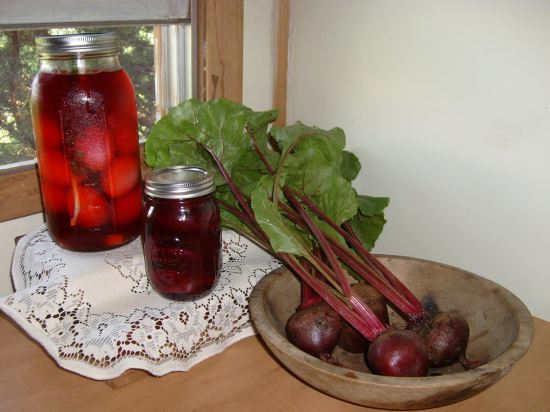
Now let’s talk about what to do with beet water/infusion. If you didn’t use it in preserving your beets, here are other uses shared by homesteader and food writer, Susan Tipton Fox:
When cooled, pour it into ice cube trays and freeze for later use. This spiced beet water goes well in green smoothies—especially those using fresh apples and plums.
This spiced liquid can be used to pickle hard boiled eggs.
This spiced liquid can be used to pickle cabbage.
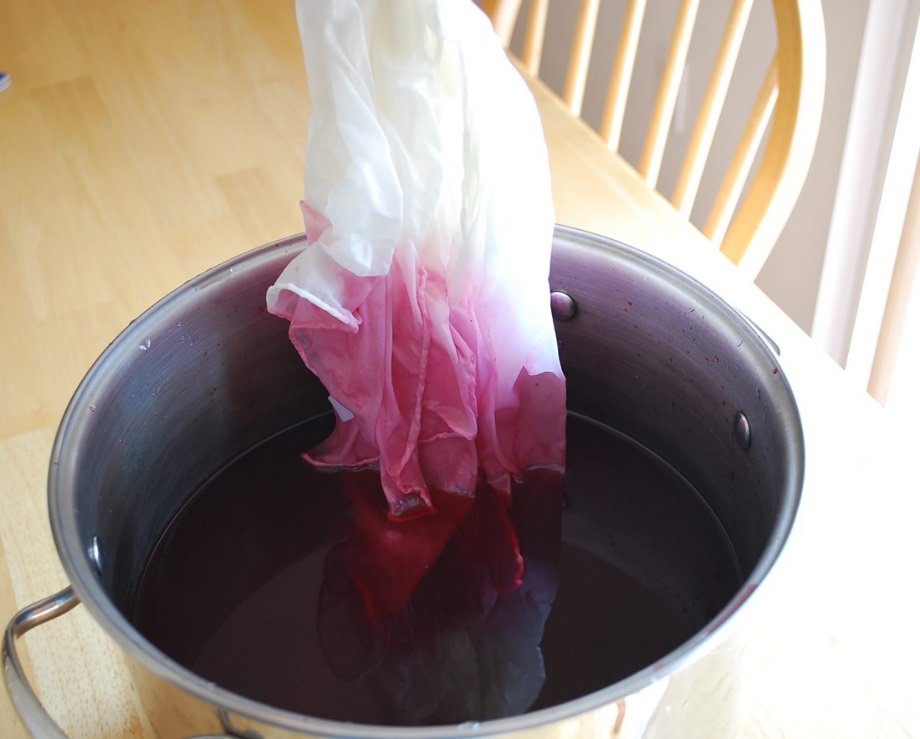
And two final beets-can’t-be-beat ideas: You can even dry the beet peels and use them as a natural dye for yarn and cloth or in paper making! Beet peels turn all-cotton fabric and yarns a soft pink or light red (depending on the amount of peel used). Or the peels can be fed to goats and chickens. (They LOVE these.)
- www.foodnetwork.com
- www.livestrong.com
- www.tasteofsouthern.com
- www.motherearthnews.com
- www.brambleberriesintherain.com
 Alice Osborne
Alice Osborne
Weekly Newsletter Contributor since 2006
Email the author! alice@dvo.com
